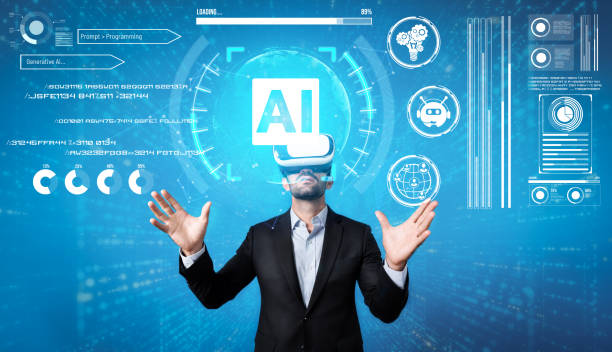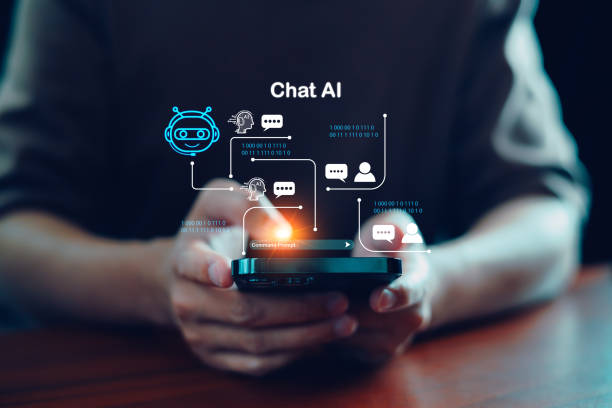What is an AI Robot? Definition and Key Concepts

#An AI Robot (Artificial Intelligence Robot) is a combination of two important fields of technology: robotics and artificial intelligence.
Simply put, an AI robot is a machine that can perform specific tasks automatically and intelligently using artificial intelligence algorithms.
These tasks can vary from simple chores like sorting objects to complex activities such as driving cars and diagnosing diseases.
In fact, artificial intelligence gives the robot the power to make decisions, learn from experiences, and adapt to new conditions.
An AI robot collects data through various sensors and analyzes it using machine learning algorithms machine learning to choose the best action. These robots are capable of improving their performance over time by leveraging data and prior experiences.
The main difference between traditional robots and AI robots lies in their level of autonomy and their ability to solve complex problems.
Traditional robots are usually programmed to perform repetitive and predetermined tasks, while AI robots can operate in dynamic and unpredictable environments and make intelligent decisions.
For example, a production line robot in a factory is considered a traditional robot, but a surgical robot that performs surgery using artificial intelligence is considered an AI robot.
Overall, AI robots represent a new generation of machines that have the potential to bring about major transformations in various industries.
Are you tired of your company’s website not being seen as it deserves and losing potential customers? Solve this problem forever with professional and effective website design by Rasawp!
✅ Increase brand credibility and gain customer trust
✅ Attract targeted sales leads
⚡ Contact us now for a free consultation!
Main Components of an AI Robot

An AI robot consists of several main parts, each playing an important role in its overall operation:
- Sensors: Sensors are responsible for collecting data from the surrounding environment.
This data can include information such as temperature, light, sound, images, and location.
Various types of sensors are chosen depending on the robot’s application. - Actuators: Actuators are responsible for movement and performing physical actions.
These components include motors, pumps, and other devices that allow the robot to interact with the physical environment. - Controller: The controller is the brain of the robot and is responsible for processing data collected by sensors and sending commands to actuators.
The controller is usually a computer or microcontroller on which the AI software runs. - AI Software: This section includes machine learning algorithms, artificial neural networks, and other artificial intelligence techniques that give the robot the power to make decisions and learn.
AI software allows the robot to learn from its experiences and improve its performance. - Power Source: The robot needs a power source to provide the necessary energy.
This power source can be a battery, an external power supply, or solar cells.
These components work together to form an integrated system that allows the #AI robot to perform its tasks automatically and intelligently.
The more advanced and coordinated these components are, the more complex tasks the robot will be able to perform.
Applications of AI Robots in Various Industries
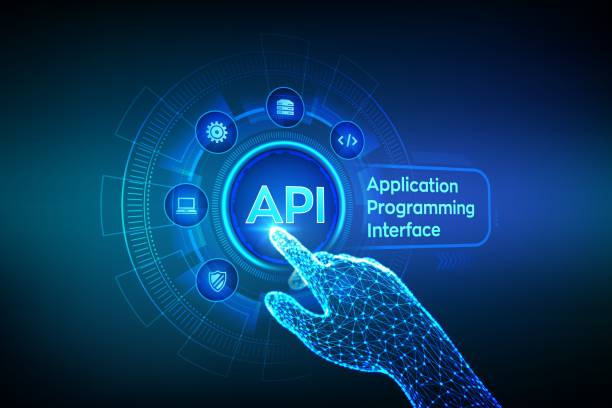
AI robots are currently used in various industries and are gradually replacing human labor in some jobs.
Some of the most important applications of these robots include:
- Manufacturing Industry: AI robots are used in production lines for repetitive and dangerous tasks such as welding, painting, and assembling components.
These robots can work with higher precision and speed than humans, leading to increased productivity and reduced costs. - Healthcare Sector: Surgical robots, nursing robots, and pharmacy robots are among the applications of AI robots in healthcare.
These robots can assist medical staff in complex surgeries, patient care, and medication distribution. - Transportation Sector: Self-driving cars, drones, and delivery robots are among the applications of AI robots in transportation.
These robots can reduce accidents, increase delivery speed, and lower transportation costs. - Agriculture Sector: Agricultural robots can assist in tasks such as planting, irrigation, harvesting, and spraying fields.
These robots can work with higher precision than humans, leading to increased productivity and reduced water and pesticide consumption. - Customer Services: Chatbots and responsive robots can assist in answering customer questions, providing technical support, and performing other customer service-related tasks.
These robots can be available 24/7, leading to increased customer satisfaction.
These are just a few examples of the applications of AI robots in various industries.
With technological advancements, the applications of these robots are expected to expand further, and we will witness greater transformations in various industries.
| Industry | AI Robot Application |
|---|---|
| Manufacturing | Welding, Painting, Assembly |
| Healthcare | Surgery, Nursing, Pharmacy |
| Transportation | Self-driving cars, Drones, Delivery |
| Agriculture | Planting, Irrigation, Harvesting |
Advantages and Disadvantages of Using AI Robots
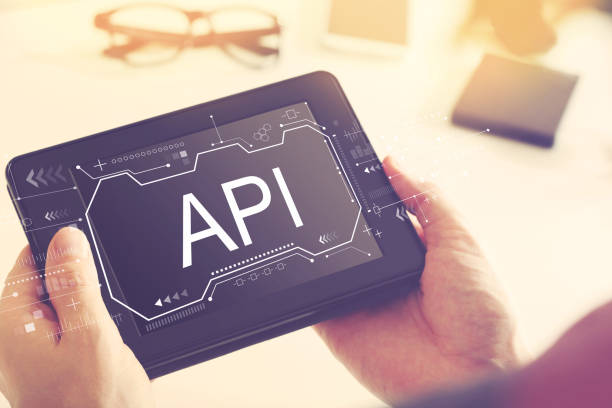
The use of AI robots has its own advantages and disadvantages, which we will discuss below:
Advantages:
- Increased Productivity: AI robots can work 24/7 without fatigue, leading to increased productivity and reduced costs.
- Increased Accuracy: AI robots can perform their tasks with higher accuracy than humans, leading to fewer errors and improved quality.
- Reduced Risks: AI robots can work in dangerous and inaccessible environments for humans, leading to reduced risks and saving human lives.
- Improved Quality of Life: AI robots can help humans with repetitive and tedious tasks, leading to an improved quality of life.
Disadvantages:
- High Cost: AI robots usually have a high cost and may not be cost-effective for many organizations.
- Need for Expertise: The design, development, and maintenance of AI robots require specialized knowledge and skills that may not be readily available.
- Ethical Issues: The use of AI robots can raise various ethical issues, such as job displacement, algorithmic bias, and data privacy.
- Security Problems: AI robots can be vulnerable to cyberattacks and expose sensitive information to risk.
Considering the advantages and disadvantages of using AI robots, organizations must decide whether the use of this technology is suitable for them.
Does your current e-commerce website design not bring you the expected sales?
Rasawp is an expert in professional e-commerce website design!
✅ An attractive and user-friendly website aimed at increasing sales
✅ High speed and security for an ideal shopping experience⚡ Get a free online store design consultation with Rasawp!
Challenges Facing AI Robot Development
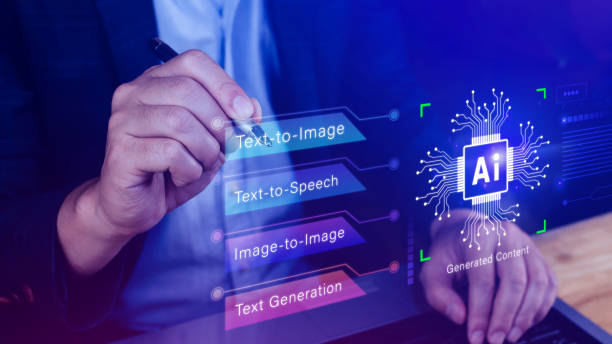
The development of #AI robots faces numerous challenges, some of the most important of which include:
- Data Scarcity: Machine learning algorithms require a large volume of data to train and improve their performance.
Collecting and preparing this data can be challenging and costly. - Algorithm Complexity: AI algorithms are very complex, and understanding and developing them requires specialized knowledge and skills.
- Ethical Issues: The use of AI robots can raise various ethical issues, such as job displacement, algorithmic bias, and data privacy.
- Security Problems: AI robots can be vulnerable to cyberattacks and expose sensitive information to risk.
- Hardware Limitations: AI robots require powerful hardware to execute complex algorithms, which can be expensive and bulky.
To overcome these challenges, investment in research and development, training specialists, formulating ethical laws and regulations, and developing more powerful hardware are necessary.
What Will Be the Future of AI Robots?

The future of #AI robots looks very bright and promising.
With technological advancements, these robots are expected to become smarter, more capable, and more pervasive.
Some predictions regarding the future of AI robots include:
- Expansion of Applications: AI robots will find wider applications in various industries such as manufacturing, healthcare, transportation, agriculture, and customer services.
- Increased Autonomy: AI robots will be able to perform their tasks independently and without human intervention.
- Collaboration with Humans: AI robots will collaborate with humans in work and living environments, assisting them in their tasks.
- Development of Humanoid Robots: Humanoid robots, which have a human-like appearance, will be developed and used for tasks such as caring for the elderly and providing services in stores and hotels.
- Integration with the Internet of Things: AI robots will be integrated with the Internet of Things (IoT), allowing them to communicate with other devices and systems and share data.
Overall, AI robots are expected to play a significant role in the future of human life and bring about major transformations in various industries and our lifestyle.
With the advancement of artificial intelligence, it is possible that AI chatbots will increasingly penetrate human life
Difference Between AI Robots and Other Robots

The main difference between an AI robot and other robots lies in their ability to make decisions and solve problems.
Traditional robots are typically programmed to perform specific tasks repetitively.
In contrast, AI robots are capable of learning from data, analyzing information, and making intelligent decisions.
In other words, traditional robots operate based on predetermined instructions, while AI robots can function in dynamic and unpredictable environments and automatically adapt to changes.
This difference is due to the use of machine learning algorithms and artificial neural networks in AI robots.
For example, a welding robot in a factory is considered a traditional robot, but an agricultural robot that uses artificial intelligence to decide when and how to water crops is considered an AI robot.
| Feature | Traditional Robot | AI Robot |
|---|---|---|
| Decision-making Ability | Limited | High |
| Learning | None | Yes |
| Adaptation to Environment | Limited | High |
| Programming | Predetermined | Automatic |
How to Train an AI Robot
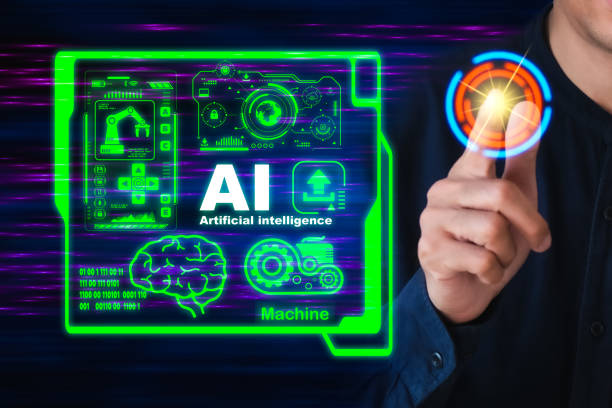
Training an #AI robot is a process through which the robot acquires the ability to perform specific tasks using data and machine learning algorithms.
This process typically includes the following stages:
- Data Collection: In this stage, the necessary data for training the robot is collected.
This data can include images, sounds, texts, and other types of information. - Data Preparation: In this stage, the collected data is cleaned, organized, and labeled to prepare it for training machine learning algorithms.
- Machine Learning Algorithm Selection: In this stage, the appropriate machine learning algorithm for training the robot is selected.
Various types of machine learning algorithms are chosen depending on the type of data and the desired tasks. - Algorithm Training: In this stage, the machine learning algorithm is trained using the prepared data.
During this process, the algorithm learns how to analyze data and identify patterns within it. - Performance Evaluation: After training the algorithm, its performance is evaluated using test data.
If the algorithm’s performance is not satisfactory, the previous steps are repeated to improve its performance.
This process is continuously repeated until the AI robot reaches a desired level of performance.
With technological advancements, new methods for training AI robots have been developed that are more efficient and faster.
Are you worried that your company’s old website will drive away new customers? Rasawp solves this problem with modern and efficient corporate website design.
✅ Increases your brand credibility.
✅ Helps attract targeted customers.
⚡ Contact Rasawp for a free consultation!
The Role of Data in AI Robots

Data plays a crucial role in the performance and efficiency of #AI robots.
In fact, data is the fuel of artificial intelligence, and without it, an AI robot will not be able to learn, make decisions, and perform its tasks.
Data is used to train machine learning algorithms, allowing them to identify patterns within the data and build predictive models.
The more data available, the more accurate models machine learning algorithms can build and the better their performance will be.
Additionally, data is also used to evaluate the performance of AI robots.
By using test data, the robot’s performance can be assessed under various conditions, and its strengths and weaknesses can be identified.
Overall, data plays a vital role in all stages of AI robot development and use, and without it, this technology will not be able to progress and develop.
Ethical Issues Surrounding AI Robots
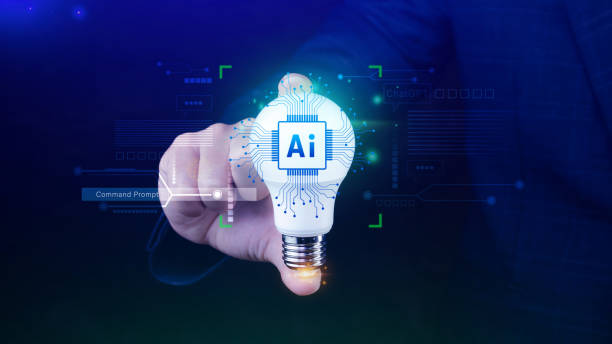
The development and use of AI robots raise important ethical issues that need to be addressed.
Some of the most important of these issues include:
- Job Displacement: The use of AI robots can lead to job losses and increased unemployment.
Attention must be paid to how this problem can be managed and how to help individuals who have lost their jobs. - Algorithmic Bias: Machine learning algorithms may have biases and make unfair decisions.
Attention must be paid to how to prevent algorithmic bias and ensure that AI robot decisions are fair and impartial. - Data Privacy: AI robots require a large volume of data to perform their tasks.
Attention must be paid to how to protect individuals’ privacy and prevent data misuse. - Accountability: If an AI robot makes a mistake, who will be responsible? Attention must be paid to how to determine accountability for AI robot decisions.
These are just a few examples of the ethical issues surrounding AI robots.
These issues must be addressed, and solutions must be provided to ensure the responsible and ethical use of this technology.
Frequently Asked Questions
| Question | Answer |
|---|---|
| What is an AI robot? | An Artificial Intelligence Robot (AI Robot) is a machine capable of understanding its environment, reasoning, learning, and making decisions to perform tasks autonomously. |
| What is the difference between conventional robots and AI robots? | Conventional robots perform repetitive tasks based on prior programming, while AI robots can learn from experience, interact dynamically with the environment, and even behave in a way that resembles human intelligence. |
| What are the main applications of AI robots? | They are used in industries (manufacturing, assembly), medicine (surgery, diagnosis), services (customer support, domestic), exploration (space, underwater), and many other fields. |
| What technologies are used in the construction of AI robots? | Machine Learning, Computer Vision, Natural Language Processing, Deep Learning, and Robotics are among the key technologies. |
| Can AI robots have emotions? | Currently, robots do not have emotions in the human sense. They can identify and react to emotions, but they do not experience emotions themselves. |
| What are the main challenges in the development of AI robots? | Safety, reliability, ethics, autonomy, adaptation to complex environments, and natural human interaction are important challenges. |
| How are AI robots trained? | They are usually trained using large volumes of data, machine learning algorithms, and deep learning to identify patterns and make decisions. |
| Examples of AI robots in everyday life? | Smart robotic vacuum cleaners, customer support chat robots, self-driving cars, and surgical robots in hospitals. |
| Are AI robots a threat to human jobs? | Some repetitive jobs may be automated, but at the same time, robots can increase productivity and create new jobs in the development, maintenance, and supervision of these systems. |
| How is the future of AI robots predicted? | They are expected to become smarter, more autonomous, and capable of performing more complex tasks, and will interact more closely with humans in various environments. |
And other services of Rasawp Advertising Agency in the field of advertising
- Smart Direct Marketing: A dedicated service for growth and SEO ranking improvement based on attractive UI design.
- Smart SEO: A dedicated service for growth and SEO ranking improvement based on marketing automation.
- Smart Content Strategy: Revolutionize click-through rates with attractive UI design.
- Smart Social Media: Professional optimization for digital branding using key page optimization.
- Smart Website Development: A fast and efficient solution for increasing website traffic with a focus on attractive UI design.
And over hundreds of other services in the field of internet advertising, advertising consultation, and organizational solutions
Internet Advertising | Advertising Strategy | Advertorial
Sources
What is Artificial Intelligence?
Applications of Artificial Intelligence
The Future of Artificial Intelligence
What is an AI Robot?
? To elevate your business in the digital world, Rasawp Digital Marketing Agency offers innovative and effective solutions. Are you looking for personal website design?
📍 Tehran, Mirdamad Street, next to Bank Markazi, Kazerun Jonoubi Alley, Ramin Alley, No. 6

